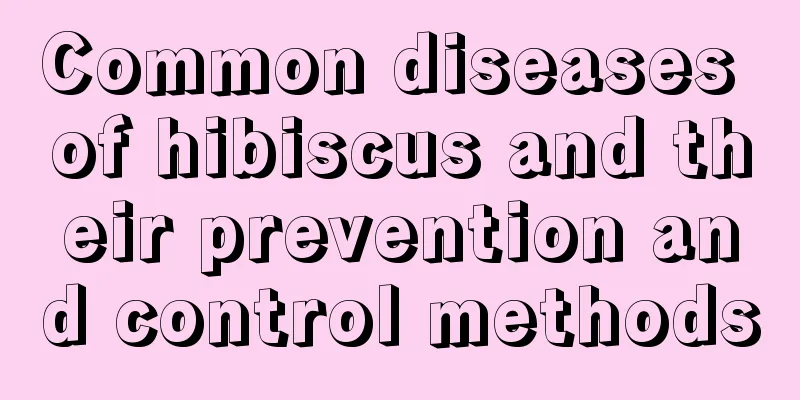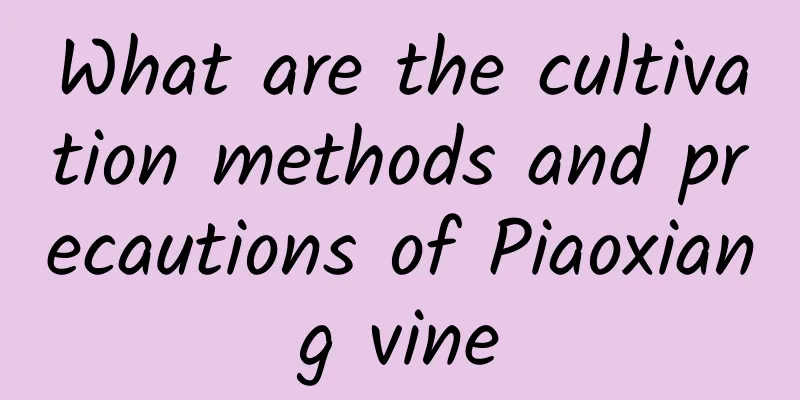Common diseases of hibiscus and their prevention and control methods

Hibiscus leaf spotHibiscus leaf spot is a fungal disease. It often occurs when the weather turns cold in late autumn, especially in northern regions. The initial symptom is the appearance of light yellow and reddish-yellow spots on the leaves. As the spots expand, they become round or oval in shape. Under relatively humid conditions, black granular substances may appear on the spots. Later, the leaves dry up and fall off. Prevention and control methods: The key to prevention and control of this disease is to do a good job of cold prevention and take protective measures when strong winds and temperatures drop in autumn. Hibiscus stem rotHibiscus stem rot is a serious and widespread fungal disease. The disease often occurs in the rainy season and is more severe under high temperature and heavy rain conditions. The initial symptoms are not very obvious. The cortex of the affected part will only shrink and appear dark brown, but the subcutaneous tissue has already begun to rot and turn brown. After the lesions circle the stem, the plant withers and dies. The leaves will also have corresponding symptoms. In the early stage of the disease, the leaves will wilt, and yellow-brown spots will appear on the edges, gradually expanding inward. In the later stage, the leaves will dry up and fall off. Prevention and control methods: The key to prevention and control of this disease is to prevent heavy rain from eroding the plants for a long time, and to apply 200-500 times diluted thiophanate to the stems every 10 days or so before and after the rainy season. Hibiscus AnthracnoseThe disease occurs on the leaves. The lesions are nearly circular or irregularly circular, often occurring on the edges of leaves. They are dark brown spots at first, and then become wider and dark red in the edges as they expand. The center is grayish white with small black dots scattered on it. The disease is serious during the rainy season. Prevention and treatment methods: ① Eliminate pathogens. During the disease process, dead and diseased branches should be removed in time and burned in a concentrated manner to reduce the source of the disease. ② Rationally apply the three elements of nitrogen, phosphorus and potassium (never apply only nitrogen fertilizer) to promote the healthy growth of plants and improve disease resistance.
|
<<: Plumeria disease and insect pest control methods
>>: Common diseases of osmanthus
Recommend
Can Christmas cactus be placed indoors?
1. Can it be placed indoors? Under normal circums...
What plants are good to plant at home?
1. Clivia Clivia is a spiritual plant that can pr...
Planting methods and precautions for yew potted plants
Before planting yew in a potted plant, it is best...
What should I do if my fairy finger grows longer and thinner?
The reason for this phenomenon We first need to u...
How to care for the newly bought ice lantern jade dew
1. How to care for the newly bought ice lantern j...
Breeding methods and precautions of Green King
1. Breeding methods 1. Soil To plant it, you need...
Can I grow flowers in my bedroom? What flowers and plants are suitable for my bedroom?
When it comes to growing flowers in the bedroom, ...
Why are the leaves of the Dancing with the Wind wrinkling and falling off? What should I do?
1. Improper watering Reason: The leaves of Dancin...
Planting technology of Artemisia chrysanthemum
1. Planting Before sowing, apply enough base fert...
What to do if the leaves of the green treasure tree droop
1. Leggy This may be because it has many overgrow...
Methods for accelerating germination of shallot seeds Three methods for raising seedlings of shallot seeds
Scallion is a very easy to cultivate vegetable. I...
The efficacy and function of lucky bamboo
The ornamental effect of lucky bamboo The reason ...
How to prune tomatoes to get more fruit
Tomato pruning is generally done in summer. The m...
Cultivation methods and precautions for ornamental bamboo
1. Maintenance methods 1. Substrate selection: Or...
The growing environment and local conditions of chrysanthemum
Chrysanthemum Growth Environment and Conditions C...









